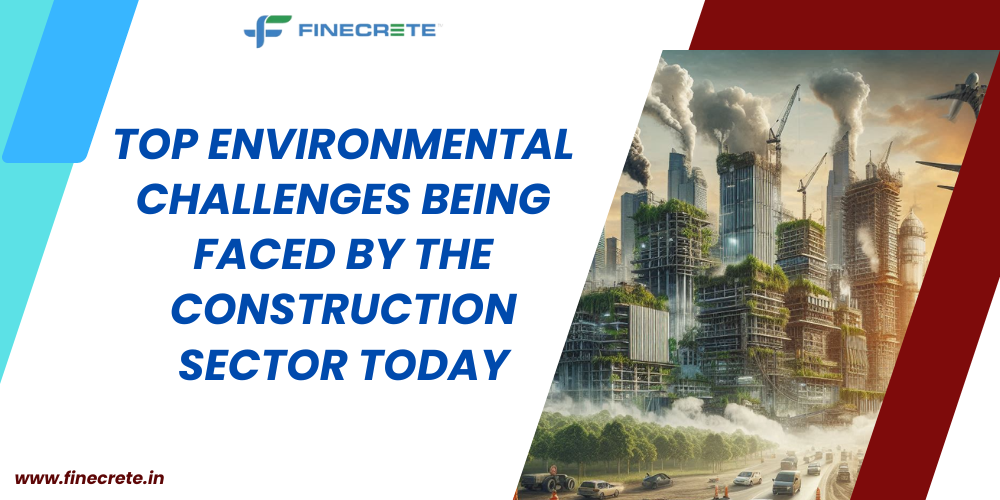The construction industry is a significant contributor to global warming and environmental degradation. As urban development accelerates and population grow, it faces rising scrutiny and pressure to adopt sustainable practices. Here are the top 5 environmental challenges that the construction sector is grappling with today, in the context of global warming.
- Rising carbon emissions
A substantial carbon footprint is one of the most pressing challenges for the construction industry. The production of construction materials, such as cement, steel, and glass, is energy-intensive. It generates significant greenhouse gas emissions.
Cement production alone accounts for approximately 8% of global CO2 emissions. With the demand for new buildings rising on, there is greater need for these materials. This is exacerbating the problem further. The industry must explore alternative materials, enhance energy efficiency in production, and adopt carbon capture technologies to mitigate emissions and combat this challenge.
- Natural resource depletion
The construction sector relies on natural resources heavily, leading to their depletion and degradation. Sand, gravel, and timber are extracted at unsustainable rates. These help meet the demands of construction projects easily. This depletion contributes to the destruction of habitats and loss of biodiversity as well as exacerbates climate change by disrupting local ecosystems.
Moreover, with resources getting scarcer, the environmental impact of extracting and transporting these materials is rising too. The industry needs to shift towards sustainable sourcing practices, such as recycling materials, using alternative resources, and implementing circular economy principles. These can help to reduce reliance on virgin materials.
- Methane emissions
Construction and demolition activities generate vast amounts of waste, which often ends up in landfills. There it contributes to the emissions of methane—a potent greenhouse gas. Common construction wastes include concrete, wood, metal, and packaging materials.
The challenge lies in finding effective waste management strategies that promote recycling and reuse. Implementing proper waste reduction practices, such as better planning, material optimization, and off-site construction methods, can help minimize waste generation and its environmental impact.
- Water consumption and pollution
The construction industry needs a lot of water, particularly for concrete mixing, curing, and site preparation. This high demand can strain local water resources, especially in arid regions.
Further, construction activities often lead to water pollution through runoff that carries sediment, chemicals, and debris into nearby water bodies. These pollutants can harm aquatic ecosystems and compromise water quality.
To battle this challenge, the construction sector must adopt water-efficient practices, such as rainwater harvesting, and recycling water used on-site. Implementing erosion and sediment control measures can also help to protect local waterways.
- Ensuring climate resilience
Many existing structures are incapable of withstanding extreme weather conditions. This vulnerability can threaten lives as well as increase the risks of potential economic losses. The industry must prioritize climate resilience by incorporating adaptive designs, using durable materials, and conducting thorough risk assessments during the planning and construction phases. This proactive approach will help mitigate the impacts of climate change on both new and existing structures.
As the global demand for construction continues to grow, the industry must evolve to address environmental challenges and ensure a healthier planet for future generations.






